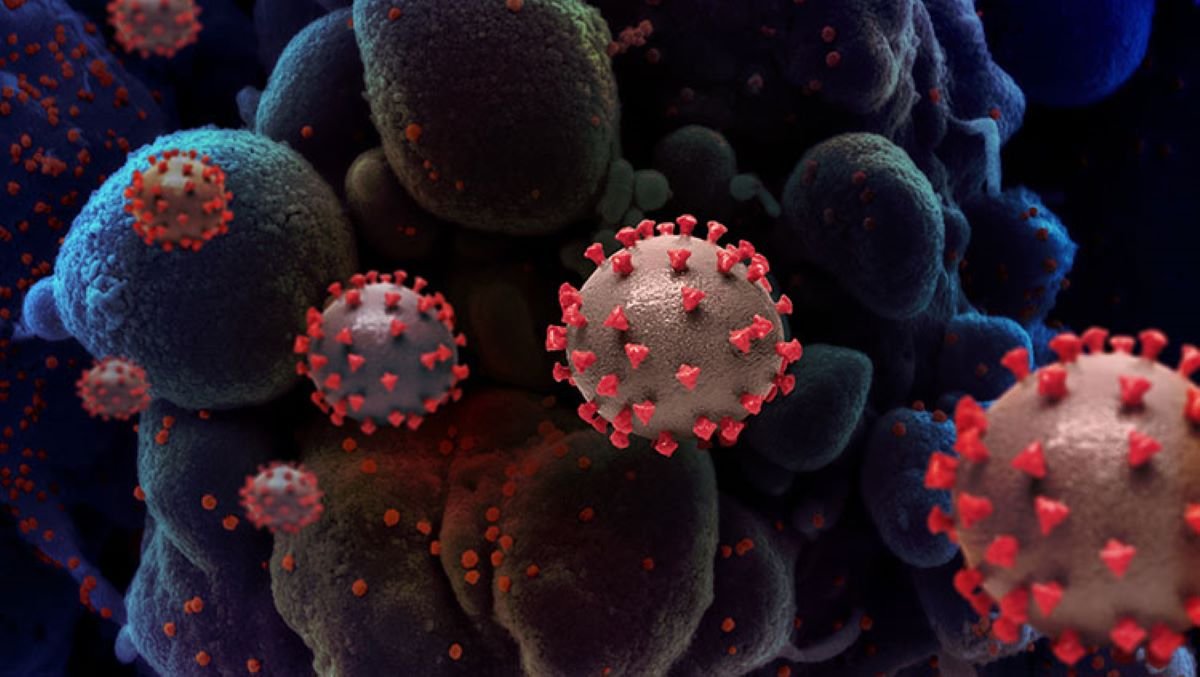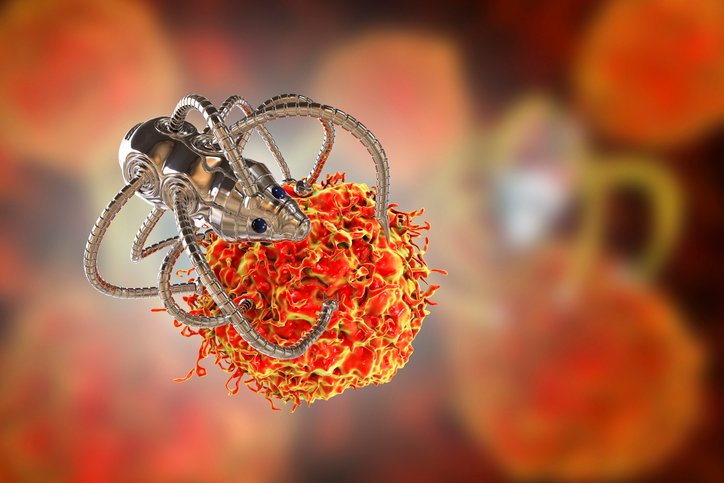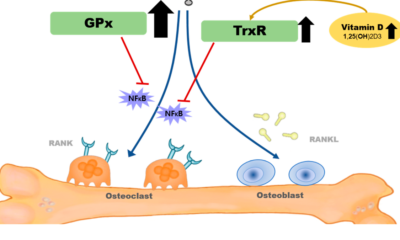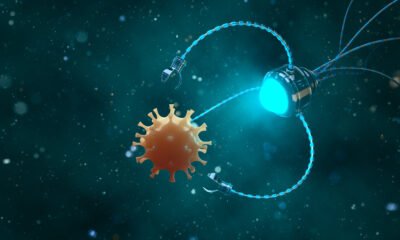Medical Sciences
Genetic Threads in Breast Cancer, Germline Mutations Unveiled at SABCS Studies

From SABCS: Surgical Insights and Genetic Frontiers in Breast Cancer
The San Antonio Breast Cancer Symposium (SABCS) recently unveiled a wealth of insights into the intricate world of breast cancer, focusing on the impact of germline genetic mutations. Researchers presented a collection of studies that delved into the nuanced effects of these mutations on breast cancer risk and survival outcomes, exploring diverse tumor subtypes and treatment approaches.

RELATED ARTICLE SABCS Studies Explore Germline Mutations’ Varied Effects on Breast Cancer Risk, Survival Outcomes
Pivotal Insights from Somatic and Germline Mutations Study
One of the pivotal studies aimed to shed light on the somatic mutational profiles of breast cancer patients harboring germline mutations compared to those with sporadic, non-hereditary cases. The retrospective analysis, encompassing 7,500 patients, revealed that about 5 percent of them carried germline pathogenic variants in cancer-associated genes such as BRCA1/2, PALB2, ATM, or CHEK2.
OVERVIEW OF BRCA1, BRCA2, and PALB2 genes
Breast cancer (BC) tumorigenesis involves key genes, including tumor suppressors BRCA1 and BRCA2 . Their phosphoproteins contribute to homologous recombination repair, cell cycle control, and estrogen transcriptional activity repression, crucial in inhibiting breast cell proliferation . Heterozygous hereditary mutations in BRCA1 heighten the risk of secondary mutations, disrupting DNA repair and increasing the risk of cancer . BRCA1 mutations elevate cumulative breast cancer risk to 60–70% by age 70

The BRCA1 c.5266dupC germline mutation in exon 20 is notably associated with high breast and ovarian cancer risk . It also influences chemotherapy effectiveness, rendering carriers sensitive to platinum drugs and resistant to taxanes . Dysfunction in BRCA1 and BRCA2 leads to homologous recombination deficiency (HRD), impacting DNA repair . Beyond germline mutations, sporadic cancers may exhibit HRD through various mechanisms, termed “BRCAness”
Large chromosomal rearrangements and mutations in BRCA1, BRCA2, and PALB2 genes significantly contribute to homologous recombination deficiency. PALB2, vital for homologous recombination repair, acts as a bridge in the BRCA complex . PALB2 mutations play a crucial role in hereditary breast cancer, leading to aggressive tumor features . Recent research highlighted the clinical potential of using PARP inhibitors, like olaparib, in metastatic breast cancer with pathogenetically significant PALB2 mutations .

Understanding the clinical significance of BRCA1, BRCA2, and PALB2 mutations in breast tumors and their impact on chemotherapy effectiveness and disease prognosis remains complex and controversial. This study aims to evaluate copy number aberrations (CNA) and mutations in BRCA1, BRCA2, and PALB2 genes in breast tumors, exploring their predictive and prognostic potential.
The findings reaffirmed the association between certain breast cancer subtypes and germline mutations. For instance, triple-negative breast cancer showed a higher incidence among patients with germline mutations in BRCA1, BRCA2, and PALB2 compared to those without these mutations. The study also brought attention to distinct somatic mutation patterns in hereditary cancers, providing valuable insights for oncologists to tailor treatments effectively.

In discussions surrounding these findings, experts, including Banu Arun from MD Anderson Cancer Center, emphasized the potential clinical implications. The interplay between germline and somatic mutations, while rare, holds promise for personalized therapy, ushering in a new era of treatment strategies for hereditary breast cancer.
Disparities in Overall Survival: The Population Study
Another extensive population study, presented by Siddhartha Yadav, scrutinized the landscape of germline mutations in breast cancer and uncovered significant disparities in overall survival outcomes. African American patients and those with ER-positive tumors exhibited worse survival rates, highlighting the need for a nuanced understanding of how germline mutations intersect with various demographic and molecular factors.
Contralateral Breast Cancer Risk: Surgical Insights
Addressing the risk of contralateral breast cancer, an international study explored different surgical procedures in patients with BRCA1 mutations. The results indicated that opting for bilateral mastectomy significantly lowered the risk of developing contralateral breast cancer compared to unilateral mastectomy or breast-conserving surgery. As new treatments like Lynparza emerge, especially for early-stage breast cancer patients with BRCA1/2 mutations, these findings prompt critical questions about the optimal surgical approaches.
Hormonal Contraception and Cancer Risk: An Intriguing Analysis
Furthermore, an analysis of hormonal contraception use in patients with germline BRCA1/2 mutations presented intriguing results. Kelly-Anne Phillips from the Peter MacCallum Cancer Center revealed a statistically significant association between hormonal contraception use and increased breast cancer risk for BRCA1 carriers. The prospective nature of the study adds weight to the findings, though caution is advised pending further confirmation.
Conclusion: A Path to Personalized Precision Medicine
In conclusion, the SABCS studies have unraveled the complexities of germline mutations in breast cancer, paving the way for personalized and targeted therapeutic interventions. As the field progresses, these insights offer hope for improved outcomes and tailored treatment strategies for individuals with hereditary breast cancer, ushering in a new era of precision medicine.
Veterinary News
Blue tongue Alert: Norfolk Livestock Farmers Navigate New Challenges

Expanding Control Zones: Norfolk’s Battle Against Blue tongue Outbreak
Norfolk’s livestock farming community faces a heightened challenge as the bluetongue control zone expands in response to new cases of this potentially fatal animal disease. Bluetongue, affecting ruminants such as cattle, sheep, goats, deer, and camelids, has raised concerns after the confirmation of two infected cattle on a holding near Norwich. The total number of cases in the county has now reached 21 since the initial discovery on a Cantley farm in the Broads on December 8, signaling the need for increased vigilance and control measures.
RESOURCED ARTICLE Norfolk bluetongue control zone extended amid new cases

The regulatory authority in charge of such matters, the Department for Environment, Food & Rural Affairs (Defra), recently confirmed the extension of the temporary control zone (TCZ) in response to the latest developments. This 10-kilometer zone was initially established to facilitate focused surveillance efforts and restrict livestock movements, aiming to prevent the disease’s further spread. All preceding cases were contained within the TCZ, but the most recent instances involved animals grazing just outside the zone during a high-risk period. Consequently, the TCZ’s boundaries have been adjusted, extending it toward Norwich to address this evolving situation effectively.
An interesting departure from previous protocol is the decision not to cull the infected animals this time. Defra has opted for an alternative approach, restricting these animals at their current locations and implementing disease mitigation measures. This strategic shift is attributed to a recent reduction in midge activity, diminishing the risk of onward transmission. The link between bluetongue and infected midges is crucial to understanding its spread, as it is believed that the disease was introduced to Norfolk and Kent by these tiny vectors, carried across the Channel from Europe during optimal wind and temperature conditions in September or October.

However, despite the absence of evidence suggesting the disease’s circulation through midges in the UK, precautionary measures within the TCZ are causing disruption and uncertainty for local livestock farms. Specific licenses are now mandatory for moving animals out of the zone, with permission granted only under circumstances of “urgent and genuine welfare need” or for direct transportation to a designated abattoir. This has added an extra layer of complexity for farmers who must navigate these restrictions while ensuring the well-being of their livestock.
RAED MORE INFORMATIVE ARTICLE UK’s Milestone In Genetic Medicine,CRISPR Therapy Treating Sickle-Cell Disease and β-Thalassaemia

In conclusion, the expansion of the bluetongue control zone in Norfolk reflects the ongoing challenges in managing and preventing the spread of this disease. The decision to extend the TCZ, along with the nuanced approach to handling infected animals, showcases the dynamic nature of the situation. Livestock farmers must now contend with both the immediate implications of the disease and the regulatory hurdles imposed by specific licenses, emphasizing the need for a coordinated and adaptive response to safeguard the region’s agricultural interests. Stay informed, stay vigilant, and adhere to the evolving guidelines to ensure the well-being of both animals and the farming community
Medical Sciences
The Nexus of Coronavirus and the Nervous System

The outbreak of Severe Acute Respiratory Syndrome coronavirus 2 (SARS-CoV-2) has ushered in the unprecedented COVID-19 pandemic. Understanding the virus and its effects on the body, particularly the nervous system, is crucial in navigating these challenging times.
Introduction: Unveiling SARS-CoV-2 and COVID-19

Coronaviruses, typically linked to mild respiratory illnesses like the common cold, took an unexpected turn with the emergence of SARS-CoV-2, causing the global spread of COVID-19. This disease showcases a diverse range of symptoms, from mild discomfort to severe respiratory distress.
Neurological Impacts Unraveling the Connection
Research underscores that neurological symptoms associated with COVID-19 likely stem from the body’s immune response rather than direct viral invasion. Comprehensive studies analyzing cerebrospinal fluid have revealed the presence of antibodies, offering insights into the intricate interplay between the virus and neurological complications.
Immediate Effects on the Nervous System A Closer Look

While a significant proportion of individuals infected with SARS-CoV-2 experience mild symptoms, those requiring hospitalization often face brain-related complications. These can manifest as muscle aches, headaches, and, in severe cases, seizures or strokes. Understanding these immediate effects is paramount in providing holistic care to COVID-19 patients.
Vascular Complications and Blood Clots A Silent Threat
The virus’s interaction with receptors on blood vessel cells presents a silent threat, leading to vessel weakening, leakage, and microbleeds in the brain. Moreover, COVID-19 induces blood clot formation, heightening the risks of strokes, heart attacks, and organ damage. Maintaining optimal oxygen levels becomes imperative in preventing cognitive disorders and other severe consequences.
Recovery and Long Term Effects The Road to Healing
While a majority recover within weeks, a subset of individuals grapple with prolonged dysfunction across various body systems. The term “long COVID” encapsulates persistent symptoms, such as fatigue, cognitive difficulties, and pain. Recognizing and addressing these lingering effects is essential for promoting the well-being of those affected and informing future healthcare strategies.
Connection to Neurological Disorders Assessing Risk Factors
Individuals with pre-existing neurological conditions may confront an elevated risk of severe illness from COVID-19. Understanding the virus’s impact on the immune system emphasizes the need for vigilance in monitoring potential long-term complications, including stroke, dementia, and muscle and nerve damage.
Striking a Delicate Balance Navigating Neurological Safety in the Realm of COVID-19 Vaccines

In the current landscape of uncertainty, the COVID-19 vaccination stands out as a crucial tool in the prevention of severe illness. While the general consensus is that vaccines are safe, it’s essential to acknowledge that isolated instances of Guillain-Barre Syndrome have been associated with specific vaccine formulations.
The continuous vigilance exercised by authoritative bodies such as the Centers for Disease Control and Prevention (CDC) and the Food and Drug Administration (FDA) plays a pivotal role. This ongoing monitoring ensures that timely updates on vaccine safety are provided, effectively managing the delicate balance between safeguarding health and addressing potential risks.
The benefits of vaccination and the potential risks associated with certain formulations underscores the importance of remaining informed. Individuals are encouraged to stay abreast of the latest information from trusted health organizations, enabling them to make informed decisions about their well-being in the ongoing fight against COVID-19.
FOR MORE INTERESTING ARTICLES Transforming Heart Failure Care: Unveiling Abbott’s ARIES Trial Breakthrough with Aspirin-Free HeartMate 3
Conclusion
In the ever-changing landscape of the COVID-19 scenario, maintaining a well-informed perspective on the virus’s effects on the nervous system is of utmost importance. Building a strong foundation for comprehension involves identifying and applying pertinent keywords linked to SARS-CoV-2, COVID-19, and related subjects.
Amid the persistent challenges presented by COVID-19 globally, having a profound understanding of the virus’s impact on the nervous system becomes a source of empowerment for individuals, enabling them to make wise decisions about their health. The collective effort of staying informed and adhering to recommended guidelines allows us to collectively navigate the uncharted territories of this pandemic, striving towards a future characterized by improved health and unwavering resilience.
Medical Sciences
Nanodrones Against Cancer,UNIST’s Innovation Marks a New Era in Treatment

Game-Changer in Cancer Research: UNIST’s Nanodrones Take the Spotlight
In the realm of groundbreaking cancer treatment breakthroughs, the spotlight is now on the Ulsan National Institute of Science and Technology (UNIST), where a dynamic team of researchers has unveiled a potential game-changer. Imagine a world where tiny nanodrones, aptly named NK cell-engaging nanodrones (NKeNDs), take center stage in the fight against cancer.
RELATED ARTICLE New revolutionary nanodrones enable targeted cancer treatment

Led by the innovative minds of Professors Sebyung Kang and Sung Ho Park from the Department of Biological Sciences, this team has cracked the code to revolutionize cancer treatment. These nanodrones, far from the futuristic sci-fi portrayals, are engineered to specifically target and obliterate cancer cells, marking a significant leap forward in the battle against this relentless disease.

At the heart of this breakthrough lies the ability of these nanodrones to engage natural killer (NK) cells, the body’s frontline soldiers against cancer. What sets the NKeNDs apart is their precision – think of them as nanoscale guided missiles homing in on cancer cells with unparalleled accuracy. The secret sauce involves utilizing AaLS protein cage nanoparticles as the foundation for these nanodrones, incorporating specific cancer-targeting and NK cell-recruiting ligands, aptly named HER2 @NKeND and EGFR@NKeND.
Lab tests have showcased the remarkable ability of these nanodrones to selectively bind to various types of cancer cells while rallying NK cells to mount a defense against the invaders. The real breakthrough emerged during mice trials, where administering HER2 @NKeNDs alongside human immune cells resulted in a significant slowdown in tumor growth, all without adverse effects.

Professor Kang Se-byung, brimming with excitement, highlighted the potential for customizing treatments for different cancers using these NK cell delivery nanodrones. It’s not merely about targeting cancer cells; it’s about doing so with surgical precision, minimizing collateral damage and maximizing the impact of the body’s immune system.
MORE LATEST ARTICLE Brain Clot Revolution, Vortex Ultrasound Tornado in Brain Health
This groundbreaking study, published in Nano Today, marks a pivotal moment in scientific progress. With the support of various institutions dedicated to advancing knowledge, the door to a new era in cancer treatment swings wide open. Nanodrones may just be the superheroes we’ve been yearning for, offering hope and resilience in the face of one of humanity’s most formidable adversaries. As we raise a toast to science and innovation, the journey towards conquering cancer takes a remarkable leap forward. Cheers to the heroes of the microscopic world.
-

 Medical Sciences8 months ago
Medical Sciences8 months agoSelenium Nanoparticles Redefining Postmenopausal Osteoporosis Treatment with a Novel Approach
-

 Medical Sciences8 months ago
Medical Sciences8 months agoTransforming Heart Failure Care: Unveiling Abbott’s ARIES Trial Breakthrough with Aspirin-Free HeartMate 3
-

 Medical Sciences7 months ago
Medical Sciences7 months agoNanodrones Against Cancer,UNIST’s Innovation Marks a New Era in Treatment
-

 Medical Sciences8 months ago
Medical Sciences8 months agoGeriatric Care in the Face of Non-ST Elevated Myocardial Infarction and Acute Coronary Syndrome
-

 Blog8 months ago
Blog8 months agoUK’s Milestone In Genetic Medicine,CRISPR Therapy Treating Sickle-Cell Disease and β-Thalassaemia
-

 Medical Research8 months ago
Medical Research8 months agoA New Chapter in Vision Restoration By Rebuilding Retinal Ganglion Cells
-

 Blog8 months ago
Blog8 months agoCutting-Edge Diagnostic Technology Handheld Device for Alzheimer’s and Parkinson’s Diseases
-

 Blog8 months ago
Blog8 months agoNewborn Hearing Screening Can Improve Reading Proficiency Skills
